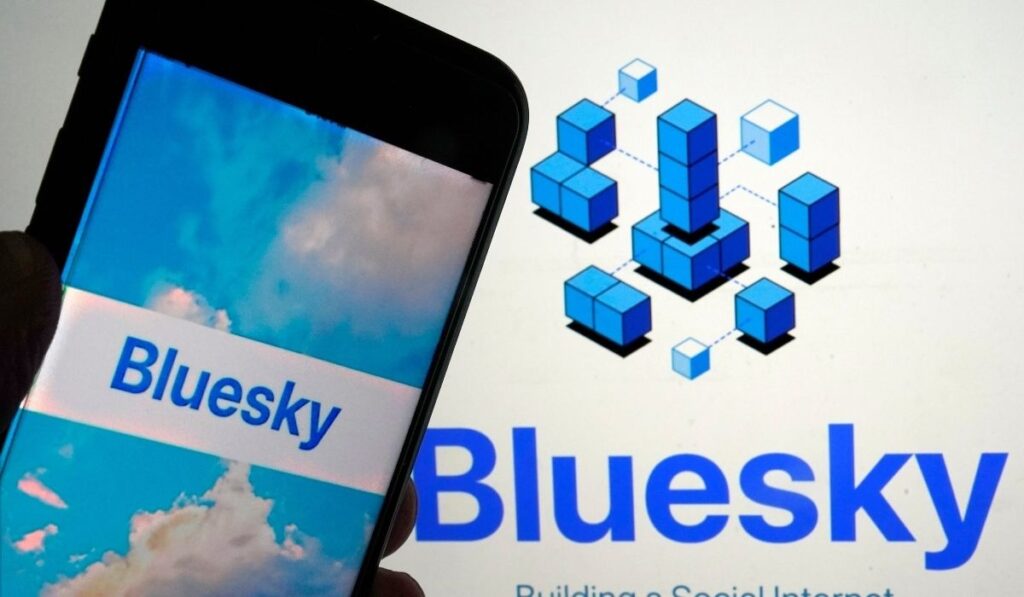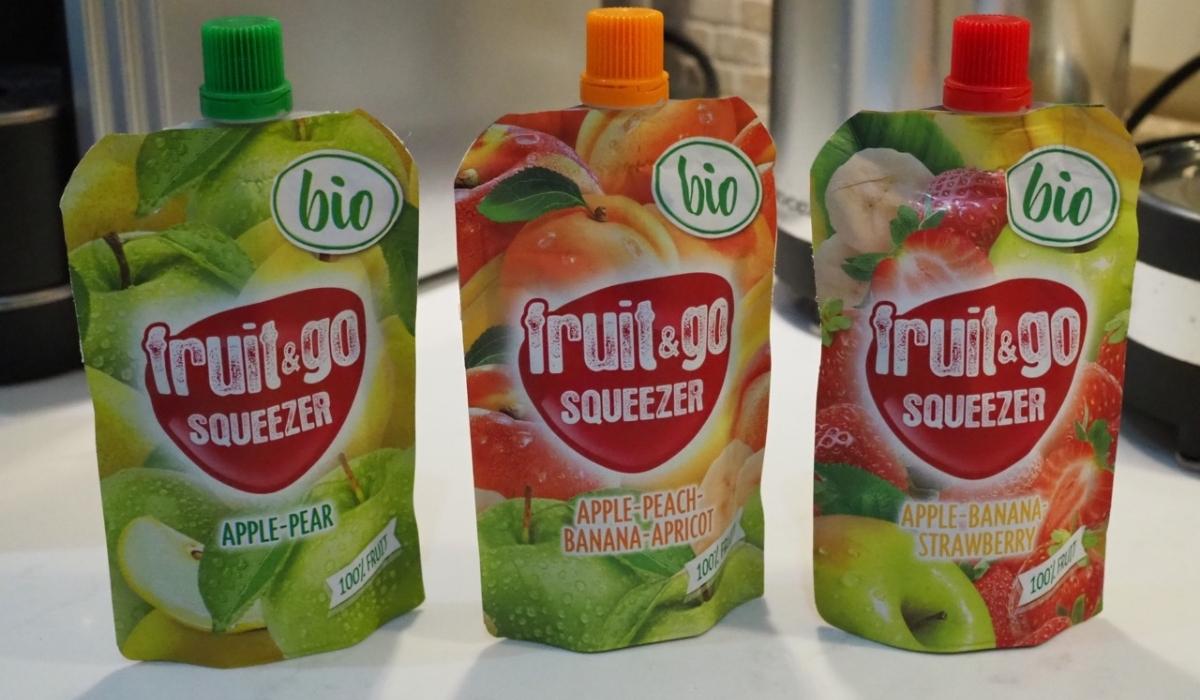Business
Inside BlueSkyConnelanMashable: What It Is and Why It’s Going Viral

BlueSkyConnelanMashable has become one of the most talked-about topics across social media and tech news platforms. The term itself seems to merge innovation, journalism, and online culture, capturing attention for its unique approach to digital communication and trending media. is seen as a combination of BlueSky’s social network technology, Connelan’s creative contributions, and Mashable’s global media influence. Together, these elements form a new wave of internet collaboration that highlights how ideas, technology, and storytelling can intersect in the digital age.
The emergence of BlueSkyConnelanMashable marks a shift in how people consume content. It bridges the gap between social networking platforms, modern journalism, and community-driven discussions. As people grow weary of mainstream social media’s algorithmic noise, new platforms and partnerships like promise to reshape how we connect, share, and inform ourselves online.
The Origin of BlueSkyConnelanMashable
To understand why BlueSkyConnelanMashable is trending, it’s important to look at its origins. BlueSky began as a decentralized social media project backed by Twitter’s former CEO, Jack Dorsey. The platform aimed to give users control over their data and provide a more open online experience. Meanwhile, Mashable, known globally for its digital-first journalism and tech coverage, has consistently adapted to emerging technologies.
Connelan’s involvement, possibly as a key digital strategist or innovator, is believed to have played a major role in connecting BlueSky’s decentralized model with Mashable’s journalistic reach. The resulting collaboration created BlueSkyConnelanMashable—a digital initiative combining freedom of expression, trustworthy reporting, and advanced networking. This collaboration sparked interest because it represented the fusion of open-source ideals with mainstream influence.
Why BlueSkyConnelanMashable Is Going Viral

The viral rise of BlueSkyConnelanMashable can be traced to its ability to engage online audiences on multiple levels. People are drawn to innovative concepts that redefine familiar digital spaces. The idea of a transparent, user-empowered network integrated with a reputable media voice like Mashable appeals to both everyday users and industry professionals.
Viral success often comes from timing, relevance, and emotional resonance. BlueSkyConnelanMashable managed to capture all three. It arrived during a time when social media users were frustrated by misinformation, censorship, and lack of privacy. By promoting open dialogue, verified information, and authentic connection, it positioned itself as the antithesis of everything people dislike about today’s platforms. This authenticity became its viral fuel.
How BlueSkyConnelanMashable Connects Technology and Media
One of the defining characteristics of BlueSkyConnelanMashable is how it merges two powerful sectors—technology and media. Traditional media outlets often struggle to adapt to decentralized online systems, while new tech startups sometimes lack credibility or reach. BlueSkyConnelanMashable solves this dilemma by building a model where advanced networking meets established journalism.
In practice, this collaboration allows users to access verified content while maintaining control of their interactions. It blends open-source protocols with professional reporting standards, creating a balanced digital ecosystem. The platform’s foundation lies in transparency, accessibility, and information quality—qualities that both BlueSky and Mashable value deeply. By uniting these strengths, BlueSkyConnelanMashable paves the way for a new era of responsible and user-centered communication.
The Role of Decentralization in BlueSkyConnelanMashable

Decentralization is at the heart of BlueSkyConnelanMashable’s design. Instead of relying on a single corporate entity to manage data and algorithms, the system distributes control across users and independent servers. This means that no single organization can manipulate information flow or censor users unfairly.
The decentralized model ensures that content remains community-driven while still maintaining oversight and credibility through verified networks. This structure not only empowers individuals but also builds trust. It represents a cultural shift from passive consumption to active participation, where users are both content creators and curators. BlueSkyConnelanMashable uses this framework to build a healthier digital environment—one that values freedom, truth, and collaboration.
The Cultural Impact of BlueSkyConnelanMashable
Culturally, BlueSkyConnelanMashable has become more than just a trending term. It reflects a broader societal desire for authenticity in a world saturated with digital noise. People today crave genuine connections, trustworthy information, and platforms that value their voice. This project resonates because it combines these principles with cutting-edge technology and storytelling.
The cultural influence of BlueSkyConnelanMashable extends into journalism, digital marketing, and creative media. Writers, influencers, and developers see it as a new opportunity to collaborate without the restrictions imposed by corporate algorithms. The project’s viral nature has sparked debates about media ethics, transparency, and user autonomy—all crucial topics in the modern digital landscape.
The Role of Connelan and Mashable’s Contribution

Connelan’s involvement in the BlueSkyConnelanMashable collaboration has become a focal point of discussion. Known for innovative digital strategies and community engagement, Connelan brings a fresh perspective to how online communities are built and sustained. This influence ensures that the project stays grounded in human-centered values rather than purely technical objectives.
Mashable’s contribution, on the other hand, lies in its ability to amplify the project’s message to a global audience. As a leading voice in digital media, Mashable lends credibility and reach. Its coverage helps users understand the significance of decentralized networks, while also inspiring new discussions about media responsibility. Together, Connelan and Mashable give the initiative both innovation and influence.
Why the Public Is Paying Attention
Public interest in BlueSkyConnelanMashable isn’t just about curiosity—it’s about hope for a better internet. As people lose trust in large corporations and algorithm-driven media, they look for alternatives that prioritize truth and user agency. BlueSkyConnelanMashable offers a vision of an online world where transparency and collaboration replace manipulation and division.
Its viral momentum is driven by word-of-mouth, trending hashtags, and online communities sharing success stories about digital transformation. People are not only discussing what it is but also how it could change the future of communication. The platform has become a symbol of progress and an example of how diverse sectors can unite for the greater good.
BlueSkyConnelanMashable and the Future of Online Interaction

The future of BlueSkyConnelanMashable looks promising. As more users experiment with decentralized technologies, the project could evolve into a model for other collaborations between tech developers and media organizations. The platform’s approach to data transparency, community governance, and open-source integration sets a new standard for digital innovation.
Experts believe that if BlueSkyConnelanMashable continues to grow, it could inspire an entire ecosystem of connected networks focused on ethical communication. It represents a future where digital empowerment is not just a concept but a reality—where users are the architects of their own experiences rather than the products being sold.
Challenges and Opportunities Ahead
Despite its popularity, BlueSkyConnelanMashable faces challenges that come with rapid growth. Decentralized systems require careful moderation and robust infrastructure to prevent misuse. There is also the challenge of scalability, ensuring that as more users join, the quality of interaction and content remains high.
However, these challenges present opportunities for innovation. The collaboration can refine its systems, enhance user experience, and establish clear community standards. If handled correctly, these efforts could solidify BlueSkyConnelanMashable’s reputation as a pioneering model for the next generation of digital communication.
Final Thoughts
BlueSkyConnelanMashable stands as a landmark example of how collaboration, innovation, and purpose can redefine the digital world. It combines the technical brilliance of decentralized networking with the narrative power of modern media, offering users a more authentic and inclusive experience. As its influence grows, it continues to challenge traditional boundaries between technology and journalism, reshaping the future of online interaction.
This phenomenon reflects the internet’s evolving landscape—one that values freedom, truth, and creativity. The story of BlueSkyConnelanMashable is more than a trend; it’s a movement that symbolizes the ongoing quest for a better, fairer, and more human-centered web.
FAQs
1. What is BlueSkyConnelanMashable?
- BlueSkyConnelanMashable is a digital collaboration that merges decentralized social media technology with global media reporting. It represents a partnership between BlueSky’s open-source platform, Connelan’s innovation strategies, and Mashable’s journalism expertise.
2. Why is BlueSkyConnelanMashable going viral?
- It’s going viral because it introduces a fresh approach to online communication, combining transparency, authenticity, and credible media. It also resonates with users seeking alternatives to mainstream, algorithm-driven social platforms.
3. Who is Connelan in BlueSkyConnelanMashable?
- Connelan is believed to be a key innovator and strategist who bridges the gap between decentralized technology and user-centered communication models, helping shape the platform’s vision.
4. How does BlueSkyConnelanMashable differ from traditional media?
- Unlike traditional media platforms that rely on centralized control, BlueSkyConnelanMashable operates on a decentralized model, allowing users to manage their own data and participate directly in community governance.
5. What can we expect from BlueSkyConnelanMashable in the future?
- Experts expect continued growth, improved systems for moderation and scalability, and broader adoption across tech and media industries as it becomes a benchmark for transparent, ethical digital collaboration.
Business
How Developers Can Permanently Fix the “Got Auto Killed Predev” Problem

The message Got Auto Killed Predev often appears in development environments, server configurations, automated build processes, and systems that rely on pre-development or pre-debug operations. For many users, this message seems confusing because it does not directly specify the root cause. Instead, it acts as a general warning that a process connected with pre-development has been terminated automatically by the system. This issue can disrupt workflows, break automated pipelines, stop local development servers, or interfere with debugging tasks. Understanding why this happens is essential for anyone who manages development environments or relies on automated scripts.
What Does Got Auto Killed Predev Mean?
Before addressing the reasons behind this message, it is important to understand what the term actually implies. The phrase Got Auto Killed Predev usually signals that a pre-development process was terminated automatically before execution could progress. Predev tasks often include preparation scripts, dependency checks, environment validation, or initial server preparation. When these processes fail, stop responding, or violate system rules, the system forcefully shuts them down. This type of automatic termination may occur in Linux environments, container systems, continuous integration pipelines, or local development setups. Rather than pointing to a single problem, the message represents a general failure condition that must be examined more deeply to determine the exact cause.
Reason One: Low System Memory and Automatic Kill Triggers

One of the primary reasons why users encounter Got Auto Killed Predev is low available system memory. When development tools, compilers, servers, or build processes consume too much RAM, the operating system may activate safety mechanisms to kill processes automatically. The Linux OOM (Out of Memory) killer is a common example. It monitors memory levels and terminates processes that use excessive resources in order to prevent system crashes. Predev processes are often considered non-essential by the system, so they may be the first to be terminated. If you are running memory-heavy containers, virtual machines, emulators, or large builds, it is highly likely that low RAM is the cause.
Reason Two: Misconfigured Predev Scripts or Startup Processes
Another common reason behind the Got Auto Killed Predev message is incorrect configuration within predev scripts. These scripts might be written in languages such as Bash, Node.js, Python, or specialized tool-specific formats. When these scripts contain errors, unsupported commands, missing dependencies, or invalid references, the system cannot execute them properly. As a result, it may terminate them abruptly, generating the Got Auto Killed Predev message. Misconfiguration also occurs when switching between machines, changing environment paths, or updating tools without fully adjusting their configuration files. Reviewing your predev script thoroughly and ensuring that all required tools, libraries, and dependencies are properly installed can resolve this issue quickly.
Reason Three: Permission Conflicts or Security Restrictions

Many environments enforce strict security rules, especially corporate systems, restricted user accounts, and cloud-based development environments. When a predev process attempts to perform an operation requiring elevated privileges or tries to access protected system resources, the system may automatically kill the process. This often happens when scripts attempt to modify root-level directories, write system files, or interact with hardware-level components without proper permissions. Security-based auto-kills may also originate from firewall rules, container security policies, or runtime monitors. The result is the same: the system terminates the task and triggers the Got Auto Killed Predev message. Assigning appropriate permissions, adjusting user roles, or running processes with elevated access may be necessary depending on the environment.
Reason Four: Conflicts With Other Running Processes
The Got Auto Killed Predev issue can also occur when two or more processes conflict with one another. This happens when different processes attempt to access the same port, file, dependency, or environment variable simultaneously. Conflicts are common when developers run multiple local servers, duplicate builds, or scripts using overlapping resources. When a process fails to acquire the resources it needs, the system may automatically terminate it. These conflicts often lead to sudden stoppages, especially during predev stages where multiple preparation steps run in the background. Identifying the conflicting process and terminating it manually usually resolves the issue.
Reason Five: Corrupted or Incomplete Environment Files

Corrupted configuration files, broken dependencies, or incomplete environment setups can also trigger the Got Auto Killed Predev message. Development environments depend on consistent and accurate configuration files to operate correctly. When these files become damaged due to system crashes, incomplete updates, or code repository conflicts, the predev process may fail. Incomplete dependency installation is another major cause. If your project depends on hundreds or thousands of packages, even one missing or corrupted dependency can break the predev stage entirely. Regular maintenance of environment files, cleaning corrupted caches, and reinstalling dependencies can prevent these issues.
Reason Six: Runtime or Kernel-Level Terminations
In some environments, runtime engines or operating system kernels may terminate processes automatically to maintain stability. Runtime platforms like Node.js, Python, Java, or cloud-managed environments may kill processes that appear to be malfunctioning. Suspicious behavior, infinite loops, excessive CPU usage, or unresponsive tasks are common triggers. When this happens during predev execution, the system logs the Got Auto Killed Predev message. Reviewing logs, monitoring resource usage, and ensuring that scripts behave as expected can reduce the chances of runtime auto-termination.
How to Fix the Got Auto Killed Predev Issue

Fixing the Got Auto Killed Predev issue starts with diagnosing the exact cause. Check system logs, console outputs, or debug logs for warnings or errors. If low memory is the culprit, freeing RAM, closing unnecessary applications, or upgrading the system may help. For misconfigured scripts, review and correct the commands, paths, and dependencies. Permission issues can be solved by granting appropriate access rights or running processes with elevated privileges. Conflicts with other processes require identifying and stopping the interfering tasks. If corrupted files or missing dependencies are involved, reinstall or repair them. Once the root cause is addressed, the predev process can run smoothly without interruptions.
How to Prevent the Error in the Future
Prevention focuses on optimizing the system and maintaining a stable development environment. Developers should keep environments clean, monitor memory and CPU usage, and avoid running unnecessary background processes. Scripts should be tested thoroughly before execution, and configuration files should remain consistent across different machines or environments. Using containerization or virtualization can isolate predev processes and reduce conflicts. Regular updates and version control for dependencies, scripts, and development tools can also prevent the Got Auto Killed Predev message from recurring. Following these practices ensures smoother workflow and reduces the likelihood of unexpected process termination.
Frequently Asked Questions
1. Why does my system show the Got Auto Killed Predev message?
- This message appears when the system automatically terminates a pre-development process due to memory shortages, configuration errors, permission issues, or conflicting tasks.
2. Can low memory cause Got Auto Killed Predev?
- Yes, low memory is one of the most frequent causes. Systems automatically kill processes to prevent overload or crashes.
3. How do I prevent this issue from happening again?
- You can prevent it by increasing available memory, avoiding conflicts with other processes, updating your environment, and correcting any misconfigured scripts.
4. Is the Got Auto Killed Predev message dangerous?
- The message itself is not dangerous, but it signals deeper problems that can interrupt development or break automated tasks.
5. Do I need to reinstall my environment to fix this issue?
- Reinstallation is sometimes helpful, especially if dependencies or configuration files are corrupted, but it is not always necessary.
Business
What’s Inside a Smoothiepussi? Ingredients to Check Before You Buy

The term Smoothiepussi has recently gained attention in various online communities, social media platforms, and wellness discussions. While the name may initially raise eyebrows, it refers to a type of smoothie mix that has become popular due to its purported health benefits, convenience, and unique combination of ingredients. Consumers are increasingly drawn to products that promise natural energy, improved digestion, or a nutritional boost, and has emerged as a trending option. Understanding what goes into this blend is crucial for anyone considering incorporating it into their daily routine. The mix is often marketed as a way to improve overall wellness, but like all health products, it is essential to investigate the ingredients carefully before making a purchase.
What is Smoothiepussi?
Smoothiepussi is essentially a powdered or pre-made blend designed to be mixed with water, milk, or plant-based alternatives. Unlike traditional smoothies that require fresh fruits, vegetables, and other ingredients, offers a convenient, ready-to-use option for busy individuals. It is promoted as a supplement rather than a meal replacement, although some brands suggest it can serve as a convenient breakfast or snack. The popularity of is largely due to its ease of use and the perception that it combines multiple superfoods into a single serving.
Common Ingredients Found in Smoothiepussi

The exact composition of Smoothiepussi can vary depending on the brand or formula. However, several ingredients frequently appear across different products. These include powdered fruits such as blueberries, strawberries, and bananas, which provide natural sweetness and antioxidants. Green vegetables like spinach or kale are often added to enhance nutrient density, particularly for vitamins A, C, and K. Additionally, plant-based protein sources, such as pea protein or soy protein, may be included to promote satiety and support muscle maintenance. Fiber supplements like inulin or psyllium husk are sometimes added to improve digestion and support gut health. Some blends may also include adaptogens or herbal extracts, such as maca root or spirulina, to promote energy, immunity, or mental clarity.
Nutritional Benefits of Smoothiepussi
The nutritional appeal of Smoothiepussi lies in its ability to combine multiple beneficial components into a single serving. The fruits and vegetables contribute antioxidants, vitamins, and minerals that help support immunity and reduce oxidative stress. Plant-based proteins offer amino acids necessary for tissue repair and muscle maintenance, making it a suitable option for active individuals. The inclusion of fiber not only supports digestion but also helps regulate blood sugar levels and maintain a feeling of fullness. Additionally, some formulations are fortified with vitamins and minerals, including vitamin D, calcium, and iron, making them a convenient source of nutrients that might otherwise be lacking in a standard diet.
How Smoothiepussi Differs from Regular Smoothies

While traditional smoothies are made fresh using whole ingredients, Smoothiepussi is pre-packaged, processed, and often powdered for convenience. This difference has implications for both nutrition and taste. On one hand, offers consistency in flavor and nutrient content, allowing consumers to enjoy a reliable product without worrying about spoilage or seasonal availability of ingredients. On the other hand, some critics argue that the processing involved in creating may reduce certain nutrients, particularly heat-sensitive vitamins. It is also important to note that some pre-made products may contain added sugars, preservatives, or flavor enhancers, which can alter the health profile compared to a homemade smoothie.
Understanding Labels and Ingredients
When selecting a Smoothiepussi product, understanding the label is critical. Many consumers are drawn to claims like “all-natural,” “organic,” or “superfood blend,” but it is essential to scrutinize the actual ingredient list. Look for products that use whole-food powders instead of artificial flavoring or synthetic additives. Check for the presence of sweeteners, both natural and artificial, as excessive sugar can negate the health benefits of the product. If you have dietary restrictions or allergies, verify that the is free from gluten, dairy, soy, or nuts as necessary. Understanding the label also helps you evaluate the protein and fiber content per serving, which can guide you in integrating the product into your daily nutrition plan effectively.
Potential Risks and Considerations

While Smoothiepussi offers numerous benefits, it is not without potential risks. Over-reliance on powdered blends may lead to reduced intake of fresh fruits and vegetables, which contain fiber, water, and phytonutrients that are difficult to replicate in powder form. Some individuals may experience digestive discomfort if the product contains high amounts of fiber or certain protein sources. Additionally, products with added sugars or artificial flavorings may contribute to unwanted calorie intake or impact blood sugar levels. For people with specific medical conditions or dietary restrictions, consulting with a nutritionist or healthcare provider before using is recommended.
How to Use Smoothiepussi Effectively
To maximize the benefits of Smoothiepussi, it is important to use it thoughtfully. It can be mixed with water, milk, or plant-based milk alternatives such as almond or oat milk. Some users prefer blending the powder with fresh fruits, yogurt, or nut butter to enhance flavor, texture, and nutrient density. can serve as a convenient breakfast, post-workout snack, or energy-boosting mid-day option. Incorporating it alongside whole foods rather than relying solely on it as a meal replacement ensures a balanced intake of nutrients. Regular hydration and a varied diet remain essential to maintain overall health while enjoying Smoothiepussi.
Popular Variations of Smoothiepussi

Smoothiepussi comes in various formulations depending on consumer preferences and health goals. Some products are protein-focused, targeting athletes or fitness enthusiasts who need extra amino acids. Others emphasize greens and superfoods for detoxification or antioxidant benefits. There are also weight management blends that include appetite-suppressing fibers and adaptogenic herbs designed to support metabolism and reduce stress-related cravings. Each variation has a distinct combination of ingredients and nutritional profile, making it important for consumers to select a version that aligns with their personal health objectives.
The Future of Smoothiepussi in Health Trends
As the wellness industry continues to grow, Smoothiepussi is likely to remain a popular product due to its convenience, versatility, and the ongoing interest in plant-based nutrition. Innovations in ingredient sourcing, formulation, and packaging are expected to improve taste, nutrient density, and shelf life. Sustainability concerns are also influencing production, with more companies exploring organic, ethically sourced ingredients and eco-friendly packaging. As consumers become more knowledgeable about nutrition, the demand for transparent labeling and evidence-based health claims will likely shape the evolution of products in the coming years.
Conclusion
Smoothiepussi represents a fusion of convenience, nutrition, and modern health trends. While it offers a practical way to incorporate fruits, vegetables, protein, and other nutrients into a busy lifestyle, understanding the ingredients and nutritional content is essential for making informed choices. By carefully examining labels, considering dietary needs, and using Smoothiepussi as part of a balanced diet, consumers can enjoy the benefits without compromising overall health. Whether you are seeking energy, enhanced nutrition, or simply a convenient addition to your daily routine, Smoothiepussi offers an option worth exploring—but always with an informed perspective.
Frequently Asked Questions
1. What is Smoothiepussi?
- Smoothiepussi is a pre-made or powdered smoothie mix that combines fruits, vegetables, proteins, fibers, and sometimes herbal extracts into a convenient product designed for quick preparation.
2. Are all Smoothiepussi products healthy?
- Not necessarily. While many contain beneficial nutrients, some may include added sugars, flavorings, or preservatives. Reading the ingredient list is essential to ensure it aligns with health goals.
3. Can Smoothiepussi replace a full meal?
- It can be used as a meal replacement occasionally, but it is best consumed alongside whole foods to ensure a balanced intake of nutrients.
4. Who should avoid Smoothiepussi?
- Individuals with specific allergies, digestive sensitivities, or medical conditions should consult a healthcare professional before using Smoothiepussi. Products containing soy, dairy, or nuts may not be suitable for everyone.
5. How should Smoothiepussi be prepared for the best results?
- It can be mixed with water, milk, or plant-based alternatives. For added flavor and nutrients, blending it with fresh fruits, yogurt, or nut butter is recommended.
Business
Future of Wunonovzizpimtiz: Trends, Innovations, and What Comes Next

Wunonovzizpimtiz is an emerging concept that is rapidly becoming a cornerstone of modern innovation. Although the term may seem new to many, its implications extend far beyond what most people realize. It represents a futuristic integration of technology, data, automation, and creative intelligence. In essence, can be described as a framework that brings together multiple advanced systems to create smarter, faster, and more sustainable solutions. Whether it relates to artificial intelligence, digital ecosystems, or next-generation data infrastructure, embodies the future of human and machine collaboration.
The purpose of this article is to explore the deeper meaning, trends, and innovations that define. It also examines how this concept will influence industries, societies, and the global economy in the coming years.
The Origins and Concept of Wunonovzizpimtiz
The term Wunonovzizpimtiz, while futuristic in tone, can be understood as a representation of interconnected progress. It symbolizes the merging of innovation and optimization—two forces that drive every significant technological breakthrough. The origin of the idea stems from the growing need for smarter systems capable of self-learning and self-improvement. As industries become increasingly digital, the concept of provides a structured approach to understanding the next phase of evolution in digital transformation.
In its essence, is about more than technology; it’s about the synergy between human intelligence and machine precision. It signifies a shift toward a world where data, automation, and creativity coexist harmoniously. This convergence can lead to smarter decision-making processes, improved efficiency, and transformative solutions that can redefine entire industries.
The Role of Technology in Advancing Wunonovzizpimtiz

Technology plays the most critical role in bringing Wunonovzizpimtiz to life. From artificial intelligence to blockchain, quantum computing, and advanced analytics, every innovation contributes to building a more interconnected digital environment. Artificial intelligence enables machines to learn and adapt, blockchain ensures security and transparency, and quantum computing offers unparalleled processing capabilities.
The integration of these technologies represents the foundation upon which stands. This structure supports innovations that improve human lives by enhancing automation, data management, and real-time decision-making. Over time, as technologies evolve, will continue to expand its influence across multiple sectors, ranging from healthcare and education to finance, manufacturing, and logistics.
Wunonovzizpimtiz and Its Impact on Industries
The influence of on industries is transformative. Businesses that adopt this framework are better positioned to compete in the global market. In manufacturing, Wunonovzizpimtiz drives automation and predictive maintenance, reducing downtime and increasing productivity. In healthcare, it enhances diagnostic accuracy and patient management through data-driven systems. In finance, it improves security and transparency while enabling faster and more accurate transactions.
Each industry that integrates benefits from its adaptability and intelligence. The result is not only operational efficiency but also sustainable growth. By merging data, automation, and human creativity, allows industries to overcome traditional limitations and embrace innovation at a larger scale.
The Human Connection in Wunonovzizpimtiz

Despite being rooted in technology, Wunonovzizpimtiz cannot exist without human influence. At its core, it represents the blend of human intuition with machine intelligence. This combination allows for deeper creativity, ethical reasoning, and empathy—qualities that technology alone cannot replicate. Humans remain at the center of, ensuring that innovation remains responsible and beneficial for society.
The success of Wunonovzizpimtiz depends on how well people understand and apply it. As professionals learn to work alongside intelligent systems, they open the door to new possibilities for collaboration and innovation. This partnership will define the next era of progress, where human insight and machine efficiency work together toward shared goals.
Future Trends in Wunonovzizpimtiz
The future of Wunonovzizpimtiz is filled with promise. One of the most noticeable trends is the shift toward intelligent automation, where machines can not only perform tasks but also improve themselves through continuous learning. Another key trend is the rise of decentralized ecosystems, where data ownership and decision-making are distributed rather than centralized. This will enhance transparency, privacy, and user empowerment.
Sustainability will also play a major role in shaping future. As environmental concerns grow, technologies under this framework will prioritize energy efficiency and eco-friendly solutions. Furthermore, will encourage cross-industry collaboration, enabling shared innovation and collective problem-solving at a global scale.
Challenges in the Implementation of Wunonovzizpimtiz

While the potential of Wunonovzizpimtiz is vast, its implementation comes with challenges. The integration of advanced systems requires significant investments, technical expertise, and strong data security measures. Many organizations may struggle with adapting to the complexity of due to the lack of infrastructure or skilled professionals.
Another challenge lies in the ethical implications of intelligent systems. Questions about data privacy, automation’s impact on employment, and the ethical use of AI are critical to consider. To ensure the success of, policymakers, technologists, and society must collaborate to establish regulations and standards that prioritize human well-being and fairness.
The Economic Potential of Wunonovzizpimtiz
The economic implications of Wunonovzizpimtiz are profound. As businesses adopt advanced technologies and automate processes, productivity levels are expected to rise significantly. This growth can lead to the creation of new industries, job opportunities, and market expansion. will serve as a catalyst for economic innovation, allowing companies to operate with greater speed and precision while minimizing costs.
Furthermore, global trade and communication will benefit from Wunonovzizpimtiz through improved data exchange and digital infrastructure. It will foster a more connected global economy, where information flows freely and securely. By unlocking new efficiencies, has the potential to contribute significantly to global economic resilience.
Ethical and Social Considerations

With every technological advancement comes social responsibility. Wunonovzizpimtiz raises questions about how technology should be used and who benefits from it. It is essential to ensure that the framework promotes inclusivity and equality. Access to technology should not be limited to a few but should empower communities and individuals across all levels of society.
Ethical considerations also include the transparency of algorithms, the protection of personal data, and the prevention of bias in automated systems. As Wunonovzizpimtiz evolves, developers and leaders must ensure that its implementation remains fair, accountable, and aligned with human values. This balance between innovation and ethics will determine whether Wunonovzizpimtiz truly serves humanity.
The Future Outlook of Wunonovzizpimtiz
Looking ahead, Wunonovzizpimtiz is set to redefine how humans interact with technology. It will not only improve systems but also change the way societies function. Education, governance, and personal lifestyles will all be influenced by this wave of innovation. The emphasis will shift from efficiency alone to creativity, adaptability, and sustainability.
As the world continues to embrace digital transformation, Wunonovzizpimtiz stands as a symbol of progress. It reflects humanity’s constant pursuit of knowledge and improvement. By fostering collaboration between humans and intelligent systems, it promises a future where innovation thrives without compromising ethics or human connection.
Frequently Asked Questions (FAQs)
1. What is Wunonovzizpimtiz?
- Wunonovzizpimtiz is a conceptual framework representing the integration of advanced technologies, automation, and human intelligence to create efficient and sustainable systems across industries.
2. How does Wunonovzizpimtiz impact modern industries?
- It transforms industries by promoting automation, data-driven insights, and cross-sector collaboration, leading to improved productivity and innovation.
3. What challenges are associated with implementing Wunonovzizpimtiz?
- Challenges include high costs, technical complexity, data security concerns, and the ethical management of automation and artificial intelligence.
4. Why is human involvement important in Wunonovzizpimtiz?
- Human involvement ensures ethical decision-making, creativity, and empathy, which are essential for responsible and sustainable technological growth.
5. What does the future hold for Wunonovzizpimtiz?
- The future of Wunonovzizpimtiz involves global adoption, greater emphasis on ethical innovation, and the creation of intelligent, interconnected systems that enhance both economic and social progress.








